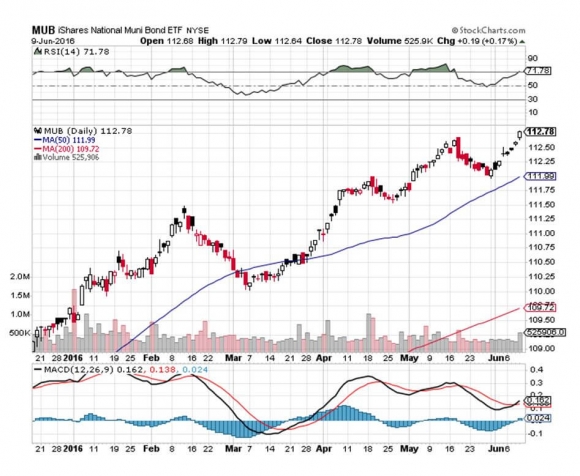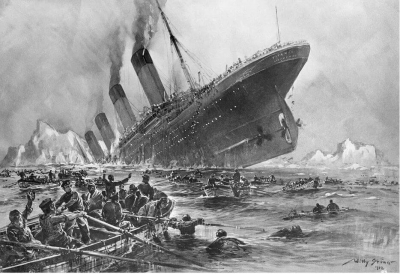Global Market Comments
June 15, 2016
Fiat Lux
Featured Trade:
(TRADING THE KENNEDY ASSASSINATION)
There is not a person alive my age who does not remember the assassination of President John F. Kennedy, on November 22, 1963, nearly 53 years ago.
The tragedy offers valuable lessons for today?s traders, although we have to travel a circuitous route to get there.
It was one of those epochal events, where people remember exactly what they were doing when they heard the news, like the 1942 Japanese attack on Pearl Harbor, and the 9/11 attacks on the World Trade Center.
During the middle of my 5th grade class there was a school wide announcement that the president had been shot while campaigning in Dallas, Texas, but was still alive. Hours later, we were told he was dead. The teachers started crying, and we were all sent home.
For the rest of the week, we were transfixed by the tumultuous events on our black and white, rabbit eared television sets. Lyndon Johnson was sworn in as president on Air Force One. Lee Harvey Oswald was arrested. Then nightclub owner Jack Ruby shot him in a Dallas jail.
It was all so surreal, witnessing history unfold before you. I remember that my dad told me this all might be a prelude to a military coup d??tat, or a Soviet nuclear attack, and that we should be prepared for the worst.
Our stockpile of canned food to feed our family of nine from the previous year?s Cuban Missile Crisis was still in its cases. So were the boxes of ammunition. Those were scary times.
It seemed like the country went to pieces after that. The Vietnam War ramped up, igniting huge national demonstrations. Some 60,000 of our guys died, including three from my high school graduating class.
Race riots followed, setting cities on fire. I got caught in the ones in Los Angeles and Detroit. Then came the Oil Crisis, Watergate, and the Iran Hostage Crisis.
Things didn?t get back to normal until the 1980?s, and guess what? The stock market started going up, and I got into the hedge fund business.
The Kennedy assassination sparked an entire industry of conspiracy theorists, armchair historians, and assorted fruitcakes and nut jobs, whose mission was to debunk the conclusions of the Warren Report.
Thousands of books were published, and even more lectures delivered. It inspired us all to distrust our government.
After all, we were told that Oswald made an impossible shot, and only a ?magic bullet? could achieve what the report claimed.
Witnesses died like flies, against all actuarial probability. The old Italian rifle he used to commit the crime was impossibly flawed.
I tended to believe the version that was taught in California state textbooks as late as the 1990s, that Kennedy was the victim of either a CIA, Mafia, or Cuban plot. The Hollywood director, Oliver Stone, fanned the flames with his 1991 film, JFK.
Then one day during the late eighties, while visiting big oil clients for Morgan Stanley, I found myself with a couple of free hours to kill in Dallas, Texas. I took a taxi to the Texas School Book Depository on Elm Street, now a museum.
It was a weekday, and I was the only visitor. So I took the elevator up to the 6th floor. There, at a corner window, cases of books were set up exactly as Oswald had placed them on that fateful day.
I looked around, saw no one else, and then deftly stepped over the rope that barred public access.
It turned out that I shared some personal history with Lee Harvey Oswald. We had both been in the Marine Corps, and obtained a marksman?s rating, which earned you a few extra dollars a month.
He had also been stationed in Japan a few years before, at a base I knew well. So I had always been curious about Oswald?s incredible shot.
I sat down in the exact spot that Oswald had and watched the traffic below. At 62 feet away, the cars were moving at 8 miles per hour, the same speed as the Kennedy motorcade. Then it hit me.
This was not an impossible shot. This was not even a hard shot. I could make this shot. In fact, half the Marines who went through basic training at Camp Pendleton could have made this shot on a bad day with a stiff wind.
It was a revelation.
It meant that the Warren Report was right. Oswald was the single shooter. It meant that all of the conspiracy theories I had heard about over the decades were lies.
Not only that, I also realized then that all conspiracy theories about everything were untrue, usually manufactured by people with ulterior motives, almost always driven by the desire to make money. The level of cooperation required between large numbers of people is far too improbable.
After that, theories about the Kennedy assassination started to unravel.
During the 1990s, the investigative TV program, 60 minutes, got several professional marksmen to easily replicate Oswald?s feat of getting off three shots with the same antiquated bolt action rifle in less than three seconds.
After a deal with congress in 1992, the government released 5 million pages of evidence on which the Warren Report conclusion was based, which had previously been secret (click here?for the National Archives).
We obtained hours of classified testimony from Marina Oswald, Lee Harvey?s Russian wife, about how troubled the man was.
We discovered that a dozen people saw a man with a rifle in the window of the Book Depository minutes before Kennedy was due to pass by. They screamed at the police to intervene, but none could hear them over the noise.
The fourth shot from the ?grassy knoll? recorded over a police radio with a broken microphone button turned out to be an echo off a building.
The FBI was aware that Oswald had taken a shot at the home of an army general only months before. A memo warning the Secret Service of the threat was found crumpled up in a Dallas agent?s desk drawer.
The Kennedy assassination has become a favorite topic of modern risk analysts who advise hedge funds.
The Secret Service was well aware of many assassination risks for the liberal, democratic president from Boston from a wide assortment of right wing fanatics in the Deep South, and they chased down many of them.
No one imagined that the actual attempt would come from the left, and they were blindsided. It is a valuable lesson that we trade and invest by today.
Finally, it was all put together is a 2007 book by Vincent Bugliosi, Reclaiming History: The Assassination of President John F. Kennedy.
I had the misfortune of working with Bugliosi while he was prosecuting cult mass murderer, Charles Manson (while working for the Los Angeles County Coroner, I had dug up some of his victims in the California desert, one with a missing head). I always found him a show boater and a tireless self-promoter.
However, in the book, Bugliosi does a masterful job of weaving together declassified evidence, testimony from missing witnesses, and the contribution of modern technology.
His conclusion: the Warren Report was dead right. As deranged as Oswald was, there was one thing he could do well, and that was to shoot straight. He then proceeds to expertly demolish every conspiracy theory out there, and uncover their promoters as the profit driven charlatans that they are.
Oliver Stone was a better storyteller than an historian.
It turns out that being perennially disbelieving of conspiracy theories is quite a useful philosophy to have as a trader. We are often asked by the media to believe in the conspiracies that underpin certain investment theses. Bet against them, and you?ll win every time.
If we don?t fight them in El Salvador, then we?ll be fighting them in the streets of Los Angeles. Russia wants to take over the world, and when they finish their work in the Ukraine, we are next.
We have to invade Iraq because Saddam
Hussein is imminently going to use his weapons of mass destruction against us. And don?t get me started on the Ebola Virus.
When gold hit $1,922 an ounce four years ago, I heard that the bars inside Fort Knox were made of lead and painted gold. When this was discovered, the price of the barbarous relic was supposed to soar to $50,000 an ounce. I sold gold short.
After Barack Obama was elected president in 2008, the internet abounded with assumptions of a vast left wing conspiracy that pegged our new president as a socialist, was born in Kenya, was going to destroy corporate America, and take away all of our guns.
Those who bought the story sold all their stocks at the market bottom, unloaded their homes, and ditched all their bonds because the US government was going to default on its debt, ignite hyperinflation, and collapse the dollar.
The advice was to put all your money into gold.
I didn?t believe any of this for a second, and did the exact opposite of what the Armageddon crowd was urging on to followers.
I bought stocks, ultra high yielding junk bonds, MLP?s, REITS, and every other risk asset out there while avoiding gold like the plague. I sold short the Japanese yen and the Euro against the US dollar.
So did my subscribers. You know the rest of the story. Some of my picks rose tenfold.
I met Senator Ted Kennedy when he was running for president in 1982. His staff sadly told me he hit the deck whenever he heard a loud noise, be it a firecracker, a backfiring car, or even a slammed door. He lived a lifetime in constant fear of assassination.
Some scars never heal.
On my next trip to Tokyo I will be spending some time at the magnificent, white stucco edifice that has been the residence of US ambassadors there for nearly 100 years. There, I will give a briefing to our newest ambassador, Caroline Kennedy, the daughter of the late president.
The National Archives will release the last of its files on the assassination 70 year after the event, on November 22, 2033.
I hope to live that long, for by then I?ll be nearly 82. Then for me, the Kennedy story will have come full circle.
 Taking the Story Full Circle
Taking the Story Full Circle
Global Market Comments
June 14, 2016
Fiat Lux
Featured Trade:
(TAKING OFF FOR EUROPE),
(TESTIMONIAL)
Terrorist attacks, mass beheadings, and crashing airlines all spell one thing to me.
Travel bargains!
Of course, my first choice for a vacation destination this year was the civil war in Syria, so I could find out on the ground what is really happening there. In addition, I could shop for a refugee camp in Jordan for one of my non-profits to help support.
Unfortunately, my family was not too hot on this idea, not wishing to buy me back from kidnappers at an inflated price, again (the last time was Cambodia in 1976).
The Joint Chiefs were not too thrilled either. At my advanced aged, I simply know too much to fall into the wrong hands.
So I compromised. This summer will find me camping out in London for the ?Brexit? vote, circling Ireland, holing up in a villa in medieval Dubrovnik, touring museums in Florence, Italy and retreating to my chalet in Zermatt, Switzerland.
My tux and white dinner jacket are packed, the five star hotels are booked, and the limo is waiting outside. The Cessna is fully fueled and the flight plan filed. I am taking off for my 2016 European Strategy Luncheon Tour.?
I have worked the hardest in my life the past year, and it is time for a break. I have also put myself through the most grueling training regimen, hiking 2,000 miles and snowshoeing another 600, all with a 60-pound pack.
Every year it seems to get harder to keep the calendar at bay.
Along the way I will be meeting with other hedge fund managers, senior government officials, CEO?s at major banks and Fortune 500 companies, large institutional investors, and a Nobel Prize winner or two.
Getting out into the real world and soaking up new data and opinions in invaluable in shaping my own global view, and your performance benefits from it. Since I don?t stumble across these people in my living room, I have to travel the world to seek them out.
In New York I?ll board the Cunard Line?s Queen Mary II at the Brooklyn Cruise Terminal to take residence in the owner?s suite. If the ship?s satellite link cooperates this year, I will be filing live reports along the way.
As we pass over the wreck of the Titanic on the second day out, we?ll throw a bouquet of flowers as a mark of respect.
In London I?ll catch William Shakespeare?s Taming of the Shrew at the Globe Theater (click here for the link at http://www.shakespearesglobe.com/theatre
I?ll spend an evening at the Royal Ballet (click here for that link http://www.roh.org.uk/about/the-royal-ballet ), and visit the Royal Academy of Arts Summer Exhibition.
At least one morning will find me catching an old-fashioned straight razor shave at the Jermyn Street Barbers, and topping up my supply of business shirts at Turnbull & Asser.
The cheese trolley at the Bibendum restaurant is to die for. For accommodations, I?ll be staying at the ever reliable, if not spartan, British Navy Officers Club. You know, the place where Horatio Nelson used to drink with his junior officers?
I?ll then board the Orient Express for Venice, where dinner is black tie only. Hopefully, there won?t be any murders this time.
If a new Brioni suit and pair of Gucci shoes throw themselves at me while I stroll through the Galleria in Milan, I may be unable to resist.
In Geneva I?ll be consulting with the representatives of several Middle Eastern royal families while they vacation in the Alps.
One afternoon will be devoted to taking the paddle wheel steamer on Lake Geneva to the Chateau de Chillon in Montreux where Lord Byron used to live, sipping fine Swiss white wines along the way.
The grand finale will be my annual assault on the Matterhorn at Zermatt, which at 14,692 feet, is higher than anything we have in the continental US. After training all year for this, it?s now or never.
I spend my evenings there at public steam baths where, afterwards, I roll around in the snow and beat myself with birch branches. It is invigorating, to say the least.
I will be traveling with my laptop and keeping in touch with the markets. While 18th century internet service is passable, the bandwidth can be snail like. So unless I see something extraordinary, I will cut back on new Trade Alerts.
After running up a 204% return in five and a half years, and beating 99% of the hedge funds in the industry, I deserve a break. I need to spend some time alone on a mountaintop, communing with the spirits, attempting to discover the new long-term market trends through the mist.
While on the road, I will continue writing my newsletter, giving you my daily dose of market insight. I will also be re-running some of my favorite research pieces from the past when my travel schedule does not allow internet access.
This is to introduce my thousands on new subscribers to the golden oldies, and to remind the legacy readers who have since forgotten them.
I will be back in San Francisco in early August, glued to my screens once again for another year of toil. In the meantime, please feel free to email me.
?Mad Day Trader, Bill Davis, will be working straight through the summer. No rest for the wicked!
In the meantime, I shall be raising a glass to all of you at dinner, the loyal readers of The Diary of a Mad Hedge Fund Trader. Salute! Prost! And Cheers! Thanks for making this letter a huge success!
If you want to take the opportunity to meet me in person, please find my strategy luncheon schedule below. To purchase tickets for the luncheons, please click here, select the "STRATEGY LUNCH" Tab and the country and city of your choice.
Monday, June 20 - London, England
Wednesday, June 29 ? Dublin, Ireland
Thursday, July 7 ? Dubrovnik, Croatia
Saturday, July 9 ? Florence, Italy
Friday, July 22 ? Zermatt, Switzerland - Seminar
Wednesday, July 27 ? Basel, Switzerland
I?ll Meet You on Top
 My Plug Adaptors Are Ready to Go
My Plug Adaptors Are Ready to Go
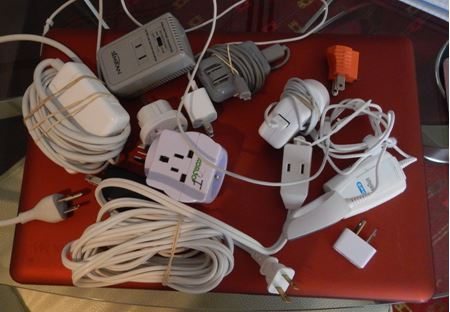 My Plug Adaptors Are Ready to Go
My Plug Adaptors Are Ready to GoI can't tell you how much I enjoy your blog. It is the first place I go every morning and I miss you on the weekends.
I stumbled upon your site about 4 months ago and have been addicted to it since day one. I really appreciate not only your insight into the markets, but also your global and historical perspectives.
All of this served up with your great sense of humor makes it a must read! Thanks for all your hard work.
Chip
Global Market Comments
June 13, 2016
Fiat Lux
(WHAT?S ON YOUR PLATE FOR THIS WEEK),
(SPY), (MUB),
(THE PASSING OF A GREAT MAN),
(JUNE 20 LONDON STRATEGY LUNCHEON)
SPDR S&P 500 ETF Trust (SPY)
iShares National Muni Bond (MUB)
Talk about someone sucking all the air out of the room!
That?s what Federal Reserve chairwoman Janet Yellen is doing, keeping us on the edge of our seats until 2:00 PM Wednesday, when the Open Market Committee?s decision on interest rates is announced.
Will she, or won?t she?
The bigger question is whether stocks will peak on the news, ending a torrid four-month, 30 handle upside move in the S&P 500 (SPY).
I bet she won?t, but then I have never been that good at predicting the needs of women.
Certainly the economic data is not there to justify a rise. And inflation is nowhere to be seen, the sole prerequisite for dearer money that Janet has told us she needs to see first.
In the meantime, a steady drumbeat of warning of an imminent stock market sell off from my old friends, George Soros and Carl Icahn, is rising to a deafening din.
Call them old fashioned, but equity price earnings multiple rising towards a nosebleed 20X against falling earnings, shrinking volume, and narrowing breadth does not scream ?BUY? to anyone with a memory.
Yes, global quantitative easing and negative interest rates may suck in enough foreign money to squeeze a few more points of upside from the S&P 500. But you can chase those pennies with your money, not mine.
In the meantime, individual investors are voting with their feet. According to data released by Lipper Analytical Services, some $850 million fled equity mutual funds last week, the sixth consecutive week out outflows.
The money fled into municipal bonds, $1.2 billion worth. No doubt investors find the stratospheric 1.32% yields irresistible. I guess the IShares National Muni Bond ETF (MUB) is the modern equivalent of a mattress.
It all sets up my scenario of the high frequency traders triggering a few more stop losses to squeeze a few more points of upside, then stocks rolling over and folding like a wet taco shell over the summer.
If that happens, US Treasury bonds will rocket to challenge century low 10-year yields of 1.36%. Fasten your seat belt, don your hard hat, and pass the ammunition!
I?m hearing that risk managers at all the major hedge funds are battening down the hatches and running scenario analyses until their mainframes melt.
Any other data releases will pale this week in the shadow of the Fed decision.
On Tuesday at 10:00 AM EST will be a yawn. The weekly Wednesday bond auctions should be well bid.
The Weekly Jobless Claims at 8:30 AM EST on Thursday will continue to peg numbers at four-decade lows.
It will be interesting to see if $50 plus oil will cause the Baker Hughes rig count to rise for a second week in a row at 1:00 PM EST on Friday.
A quadruple witching option expiration should provide the usual excitement at the Friday close as the plungers and market makers game the even money strikes.
If you have any questions on the above, you can call me via international radiotelephone on the Queen Mary 2 in the aft deck 10 Owner?s Penthouse Suite.
I should be somewhere in the mid Atlantic sipping my Dom Perignon sailing over the wreck of the Titanic.
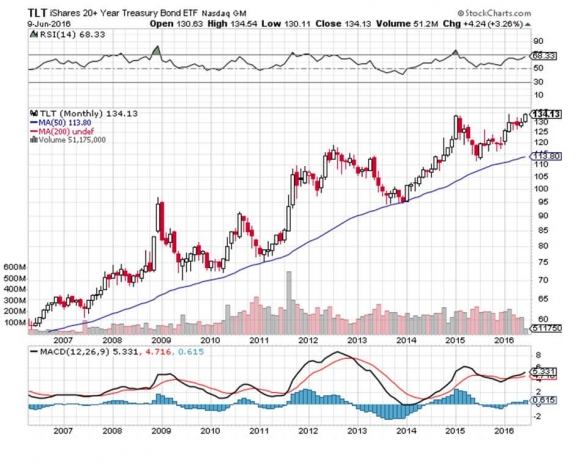
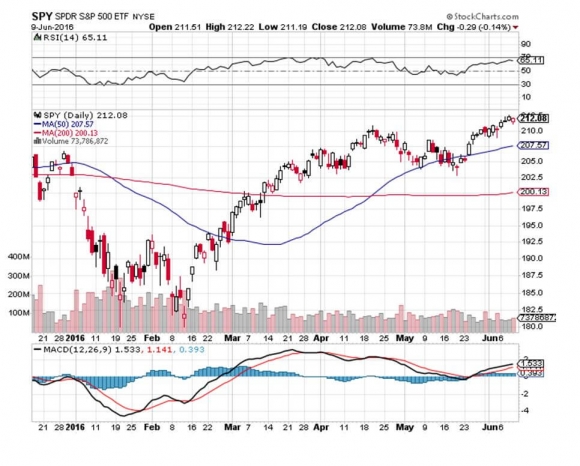
Legal Disclaimer
There is a very high degree of risk involved in trading. Past results are not indicative of future returns. MadHedgeFundTrader.com and all individuals affiliated with this site assume no responsibilities for your trading and investment results. The indicators, strategies, columns, articles and all other features are for educational purposes only and should not be construed as investment advice. Information for futures trading observations are obtained from sources believed to be reliable, but we do not warrant its completeness or accuracy, or warrant any results from the use of the information. Your use of the trading observations is entirely at your own risk and it is your sole responsibility to evaluate the accuracy, completeness and usefulness of the information. You must assess the risk of any trade with your broker and make your own independent decisions regarding any securities mentioned herein. Affiliates of MadHedgeFundTrader.com may have a position or effect transactions in the securities described herein (or options thereon) and/or otherwise employ trading strategies that may be consistent or inconsistent with the provided strategies.












